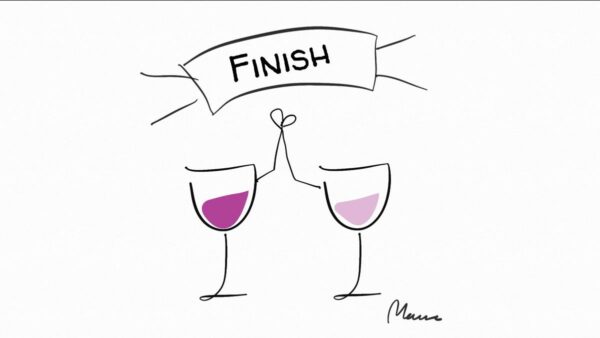
One of the things we learn as we become more acquainted with the wide world of wine is that there’s almost no end to its variety — that it can be made in a myriad of styles from dry to sweet, fruity to savory. We all know that some red wines are big in body, with lots of texture and deep, powerful flavors, and that others are light in body, with little texture and delicate, even airy flavors. But do we know why?
Both Latitude and Altitude Matter
As vineyard sites advance farther north or south of the equator grapes don’t ripen as readily or (often) as fully. As grapes ripen, their acids decline and their sugars rise. Less ripe fruit contains more acid and less sugar, which translates directly to less alcohol in the resulting wine. I don’t know of any formula that explains the relationship with precision, but altitude mimics latitude in this respect. Advancing too far in either dimension quickly takes you out of the range where vines can thrive.
Variety matters, too.
No sooner have we grasped the concept outlined above, than we have to give it a twist. While latitude and altitude have a direct effect on both the rate and degree of ripening, making a palatable, satisfying, stable wine always requires fruit to achieve a certain level of ripeness. To accomplish this, winemakers have to be savvy about planting grape varieties that can manage this in the place they find themselves.
Learn a New Word: Phenolics
Wine grapes carry the bulk of what gives wine flavor, aroma, color, and structure in their skins. The general term for these elements is phenolics: a class of chemical compounds that includes pigments and tannins. When present in abundance, these compounds make a rich, flavorful, textured wine. Where the phenolic content is lower, the result will be something lighter, brighter, and sleeker. The Fat and Skinny, respectively, of our headline.
Red grapes with notably high phenolic content include Cabernet Sauvignon, Malbec, and Syrah; those with lower levels, Schiava Nera, Pineau d’Aunis and Poulsard.
Looked at this way, it’s not just the extreme conditions that are responsible for creating one kind of wine or another. It’s the potential of the varietal to achieve functional ripeness under prevailing conditions. Fat and Skinny don’t really compete with each other. It’s more like a race against the clock over an obstacle course that’s different every year.
You can prefer one over the other, but let’s be sure to give each its due.